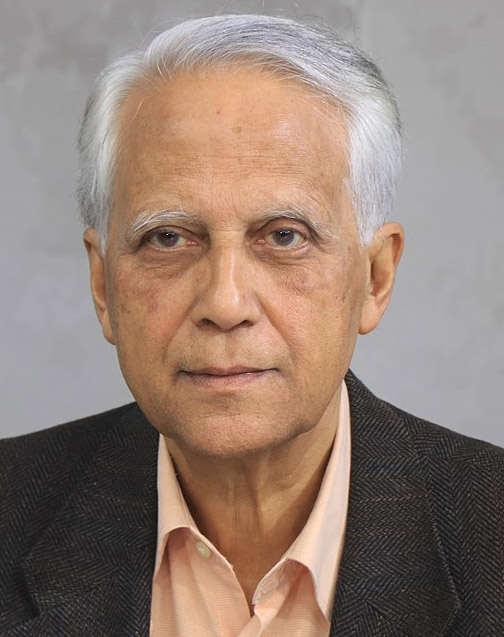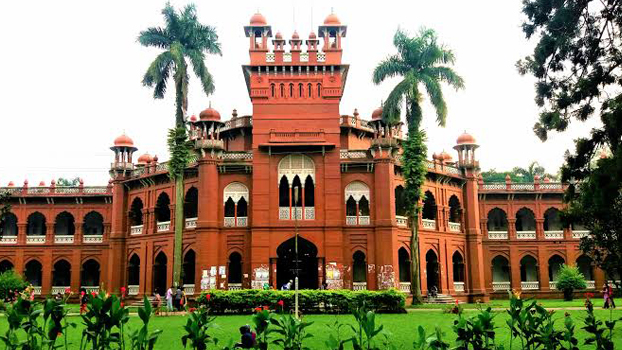A century later Dhaka University is moving forward again
The Dhaka University is a milestone in our national fabric and a monument to the creation of Bangladesh

Bangladesh’s University of Dhaka- is celebrating its hundred years. The Dhaka University Vice Chancellor has already officially inaugurated the centennial celebrations on 1 July but the official centenary celebration will take place on 1 November this year.
Since the first day of July, 1921 when this University opened its door to students with Sir P.J. Hartog as the first Vice-Chancellor, its evolving dynamics has made significant contributions not only in the geo-political horizon but also in the socio-cultural and linguistic front.
I completed my Masters degree in English Literature and also my Bachelors Degree in Law from this University in the Sixties. I still remember my Metaphysics classes in the Philosophy Department of this University with the late Professor G.C. Dev fifty-eight years ago. I recall how he helped to instill in the minds of his students the need to be humane in their treatment of others and how to give importance to views that differed from one's own.
I also remember the kindness and firmness with which important areas of our lives were addressed, and our queries answered in the tutorial classes supervised by Professor Dr. J. Guhathakurta and Professor K.S. Morshed. These teachers and many other educationists helped to open windows of our imagination and taught us to appreciate values. They were the standard bearers who outlined moral thresholds and presented the world and the connotations of our existence. Unfortunately, many amongst my teachers became martyrs during our War of Independence- some in the very beginning and some subsequently.
It would also be pertinent to render my homage to Madhusudan Dey (also known as Madhu), the founder of Madhur Canteen. He was a familiar name in the history of this University as well as in the national politics of this country. I witnessed how, several times over tea, he rendered discreet assistance and associated himself with various political movements which originated from the Dhaka University. An important figure in the socio-political history of the region, he was killed on the night of 25 March 1971 after the attack by the Pakistan Army on this University. He was executed along with many other University students in the Jagannath Hall premises. .
Recalling the different experiences that I had undergone and sharing them with my friends has continued for nearly six decades.
Some historians have observed that the establishment of the University was a form of compensation for the annulment of the Partition of Bengal that had taken place in 1905. The partition had established Muslim majority East Bengal as a separate Province, with Dhaka as its capital. All India Muslim League, newly formed in Dhaka, wholeheartedly supported the move. However, the partition was abolished in 1911 due to severe opposition from the National Congress of India and the Bengali Hindus.
Deeply hurt by the decision of annulment of Bengal partition, a Muslim delegation led by Nawab Salimullah Bahadur, the then Nawab of Dhaka demanded that a University be set up in Dhaka. To appease the majority Muslim masses of East Bengal, Lord Curzon agreed and declared that a University as a center of excellence would be established in Dhaka.
Nawab Salimullah played a pioneering role with regard to the establishment of the University in Dhaka and donated 600 acres of land from his estate for this purpose. After his death, his successor- N.A. Chowdhury continued the movement for establishing the University and mortgaged a part of his zamindari estate to donate 35,000 Taka for the University. He also gave 16,000 Taka to the University of Dhaka for student’s scholarship in 1921. These were large amounts of money in those days.
In 1913, public opinion was invited before the University scheme was given its final shape. The Secretary of State approved it in December 1913. The first Vice-Chancellor of the University was Professor Dr. P.J. Hartog- formerly academic Registrar of the University of London for 17 years. It was established in 1921 under the Dacca University Act 1920 of the Legislative Council of India. The Dhaka University was modeled after British Universities.
Academic activities started on 1 July in 1921 with 847 students along with 3 faculties: Arts, Science and Law. There were 12 Departments: Sanskrit and Bengali, English, Education, History, Arabic and Islamic Studies, Persian and Urdu, Philosophy, Economics and Politics, Physics, Chemistry, Mathematics, and Law. Three dormitories were also established for students: Salimullah Muslim Hall, Dacca Hall and Jagannath Hall.
The University played a significant role in the movement for gaining respect and equality for the Bengali language. This happened when Bengalis joined together to fight against Urdu being the official language in East Bengal. Dhaka University was the main place where the movement started with the students joining together and protesting against the Pakistan government. Later many students were massacred in the area where the Minar dedicated to Shaheeds stands today. After this incident, Bengali gained the necessary support to be acknowledged as an official language- thanks to Bangabandhu Sheikh Mujibur Rahman and the important role of coordination that he played during this critical time.
Subsequently, in 1966 and then till March, 1971, it was the focal point for protests against mis-governance and abnegation of human rights pertaining to the Bengali population of our country.
The students of this University- a vast majority of them - refused to yield to the inhuman measures that were being carried out by the Pakistani Armed Forces from West Pakistan. They stood firmly together, helped to free Bangabandhu from internment and then assisted him in his efforts towards the gaining of our independence. Many joined the struggle as Freedom Fighters, crossed the border into India and later helped in the victory of the Joint Command over Pakistan on 16 December, 1971.
Today, one hundred years later, the Dhaka University has become a national symbol of progress. It is the largest University for Public Research in Bangladesh, with a student body of nearly 38 thousand and a Faculty of more than 2,000. It has also been identified as one of the top 100 Universities in Asia.
Now, there are 23 Residence Halls for the students and Dormitories for the teachers as well as for the Officials of the University.
One needs to refer at this point to the Dhaka University President's Order No. 11 of 1973 that assisted in the reorganization of the University of Dhaka. This has helped to improve the teaching and research paradigm and also the administration matrix that was required after the 1971 War of Independence.
Our Dhaka University, celebrating its 100th anniversary, is now an institution with a major difference. It has created special Research Centers related to Business, Natural Sciences and Renewable Energy. It now has 13 Faculties and 83 Departments. This includes, among others, in the Faculty of Arts- interesting Departments like Language Science, Linguistics, Information Science and Library Management. Similarly, the Faculty of Business Studies, with nearly 153 teachers, 10 officers, 58 employees and more than 6100 students- is also offering to students- Hospitality associated with Tourism Management, Information Systems and Organization Strategy and Leadership.
It also needs to be noted that the Faculty of Business Studies of the University has an E-Library which is the largest in Asia of its kind. This advanced level E-Library is connected with 35 internationally renowned libraries and publication houses in the world. As a result of this development, Teachers, students, and researchers are able to read all journals, books research papers, and articles of leading libraries, including the Dhaka University, Oxford University, and Cambridge University libraries, by using the E-Library facilities. This e-library was built in collaboration with Robi Axiata Limited in August 2015. It can accommodate around 1400 students altogether and has three sections: computer section, silent zone, and discussion zone. Some 7,000 students and 208 teachers of the faculty are being directly benefited from the facility.
There are several other Faculties with very motivating subjects- Medical Psychology and Educational Psychology in the Faculty of Biological Science, and several interesting Departments in the Faculty of Fine Arts- related to Graphic Design, Ceramics, Craft, Sculpture, Printmaking and Oriental Art. Such diversity has also emerged in the arena of Pharmaceutical Technology and Computational Chemistry. Similarly, consistent with the evolving situation in the rest of the developed world, the Faculty of Social Sciences has seen the emergence of separate Departments related to Mass Communication and Journalism and also Peace and Conflict Studies.
Such advancement through diversification has resulted in the Dhaka University being acclaimed all over the world today as a formidable higher educational establishment.
However, most unfortunately, we have also witnessed over the last two years, unacceptable incidents that have taken place within the campus of the Dhaka University and have tarnished the image of this institution. It has also reflected on the inability of the University Administration in being able to provide the necessary security to the students.
In more ways than one some political parties have mistreated the concept of freedom of movement and carried out misuse of their presence. These incidents have sometimes created uncertainty and raised anxiety. This has to stop. Students need to have the freedom of space and also movement. However, the right to assemble should not be mis-represented in a manner that creates instability.
We all need to work together. The Dhaka University is a milestone in our national fabric and a monument to the creation of Bangladesh.
Muhammad Zamir, a former Ambassador, is an analyst specialized in foreign affairs, right to information and good governance.


